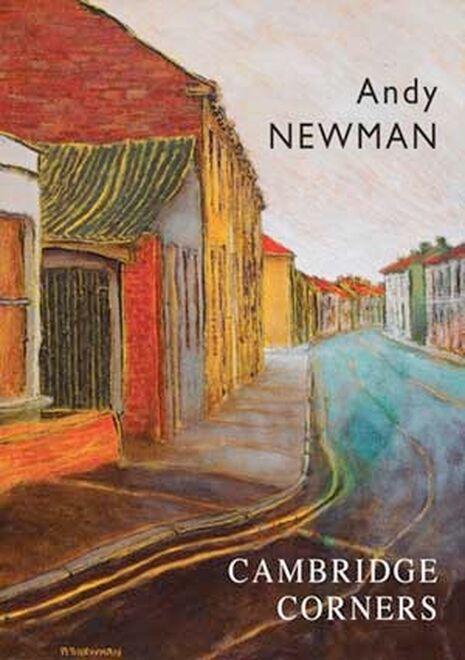Standing on the corner: a review of Andy Newman’s ‘Cambridge Corners’
Visiting Williams Art Gallery earlier this month, Jon Sanders reviews Andy Newman’s ‘Cambridge Corners’.
As Andy Newman talked me through the winding philosophy of his new exhibition, “Cambridge Corners”, it was as if he was gesturing subtly at its theme. His reasons for painting a series on the urban architecture of Petersfield and Romsey are various – biographical, artistic, pragmatic. That there is no single motive is important. The viewpoint is usually of an individual on the move who has paused briefly to contemplate an interesting door, chimney or pavement. Newman must be one of the only people who has stopped in these long roads of houses for a purpose other than staring into someone’s living room.
There are no people in Newman’s paintings, nor any signs of human presence. He is primarily interested in shape and colour, displaying both in dazzling combinations. Buildings drawn upwards, doors squashed and windows of moulded disproportion all exist in a world of childish caricature. These are streets in which big friendly giants might stroll at witching hour. Newman’s lintels especially seem to have their own humorous personality (one longs to draw smiley faces on them).

Newman’s colour, too, inhabits an alternate reality. In particular, the roads in his paintings are unlike any earthly road; they are rather vortexes of spectral awakening, and rivers in which jostling currents are visible. One of his most pleasing motifs is a thin yellow grid, reminiscent of an ordnance survey map, which can be found crossing a roof, separating slabs on pavements, structuring brick walls, and gently connecting all the paintings, otherwise distinct. Overall, his interests and style are not dissimilar from those of Cézanne, and it’s no shock to find that Newman has spent much time painting the south of France.
The appropriateness of the space, Williams Art on Gwydir Street, is another point in the exhibition’s favour. Chris Williams, the gallery’s director, has commissioned a set of paintings that not only re-present the roads around the gallery, but paintings that build their way along the walls of the viewing space. Comparing the paintings, you stand in this corner and glance over to that, or amble round as if inquiring into people’s front rooms. While the title of the exhibition may incorrectly suggest that Newman’s paintings are only mimetic, it does ask the question as to how far all urban architecture is like these “Cambridge corners”, and on leaving the exhibition you find Newman’s “Cambridge corners” just about everywhere.
 Features / Should I stay or should I go? Cambridge students and alumni reflect on how their memories stay with them15 December 2025
Features / Should I stay or should I go? Cambridge students and alumni reflect on how their memories stay with them15 December 2025 News / Cambridge study finds students learn better with notes than AI13 December 2025
News / Cambridge study finds students learn better with notes than AI13 December 2025 News / Dons warn PM about Vet School closure16 December 2025
News / Dons warn PM about Vet School closure16 December 2025 News / News In Brief: Michaelmas marriages, monogamous mammals, and messaging manipulation15 December 2025
News / News In Brief: Michaelmas marriages, monogamous mammals, and messaging manipulation15 December 2025 Comment / The magic of an eight-week term15 December 2025
Comment / The magic of an eight-week term15 December 2025








